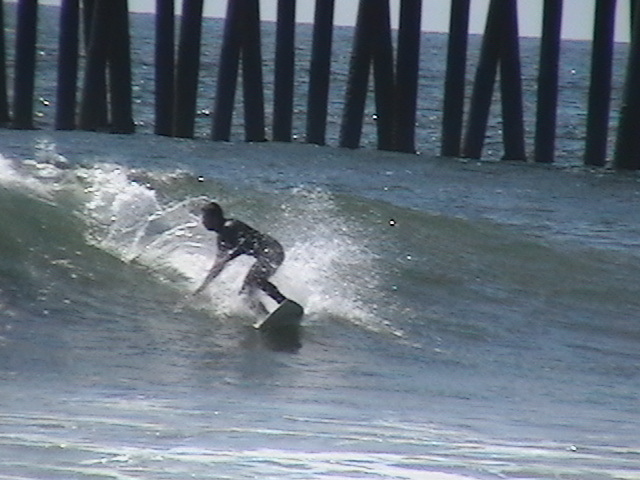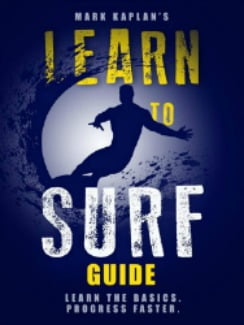Catching Real Waves on the Soft Top Surfboard
Catching real waves on the soft top surfboard is where beginners start. Soft tops are great on small real waves and make it easier for beginners making this advance.
After practicing on foam waves near the shore, surfers can paddle out to bigger foam waves and smaller real waves. The surfer at this point should be able to catch a foam wave with a good pop up and ride straight to the beach without falling off.

Timing Real Waves
Foam waves break in a straight line and give surfers a long time to get in position. A real wave peaks and gives surfers much less time. The surfer has to be in the right spot. The real wave should come under the surf board and peak over the surfers head.
On small waves when the wave peaks, the surfer should then be paddling hard down the face. Many beginners make the mistake of letting the wave pass them and then trying to paddle over the top. It takes more courage to let it come under the board and poor time will result in crashes. But start with small waves.
Getting into the Pocket
The point of riding real waves is riding in the pocket and not straight to the beach like with foam waves. Off the face of the wave, the surfer makes a bottom turn into the pocket. A second method is to point the board toward the pocket before the pop up.
A third method when the waves are bigger or two steep at the apex (where the foam comes over the top first) is to paddle further down the line and catch a corner. At the corner, the wave is not as steep nor moving as fast.
Watching the Line Up
If you are in the line up with other surfers waiting for waves, there are rules of etiquette so no one gets hurt. The first surfer on the wave close to the apex has the right of way on the wave and other surfers cannot ride it.
Some lineups are aggressive and some allow everyone to have a turn. If you wait your turn and then start paddling when you see a wave, other surfers might let you have it. If you miss it or fall off, they won’t be so generous next time.
If the line up is aggressive or all advanced surfers, you might try to move to another section or move closer to shore on sand bar bottom beaches where waves reform. This is why you should master the techniques of soft tops on foam waves before you venture to real waves and line ups.
For Oceanside Surf Lessons, see the Home Page
See the Post Search Lessons Teach Fundamentals
See the Post Catching Real Surf Waves
See my Dry Land and in Water Demo video
See my other Surf site for more Posts
I have lowered the price of Courses and Books for the lock down
My New Surfing Course in an E-Book plus Demo Video
Get the 18 Chapter, 7,500 word Course that can prepare you for a lesson or give you the fundamentals if you are going to try it on your own. 10 years of teaching 350 students a year has given me the insights on the most precise measures you must follow for success. This course is what I teach on the dry land and in water instruction. The Course includes a 15 minute video on my dry land and in water demonstration. Only $4.95
Buy the E-Book and start learning $2.99. Learn to Surf
Buy the Paperback on Amazon $7.95
Get Learn to Surf Course in 29 minute audio. Great prep for a lesson, reviewing after a lesson, learning on your own, refreshing after not having surfed for a while. See Table of Contents. Only $7.95.

80 page Learn to Surf Book
![Surf Instructions Beginner to Advanced: Learn to Ride Waves by [Kaplan, Mark]](https://images-na.ssl-images-amazon.com/images/I/51HswFtoBQL.jpg)
Buy my E-book on Amazon Kindle for $2.99. 80 pages of beginner to advanced instructions to help you before the first lesson to learning expert techniques and tricks.
I also have books on Creating Your Own Happiness on a site called Happiness and Work Life Balance